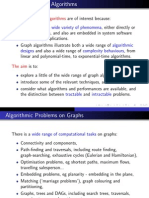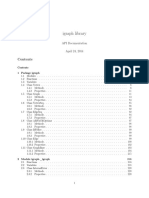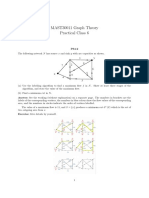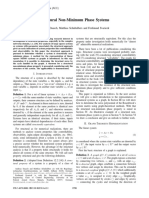0% found this document useful (0 votes)
3 views34 pagesGraph&Graph Traversal
A graph is a data structure made up of nodes (vertices) and edges that connect pairs of nodes. It is used to represent networks like social connections, maps, or the web.
Uploaded by
Sivam ChinnaCopyright
© © All Rights Reserved
We take content rights seriously. If you suspect this is your content, claim it here.
Available Formats
Download as PPT, PDF, TXT or read online on Scribd
0% found this document useful (0 votes)
3 views34 pagesGraph&Graph Traversal
A graph is a data structure made up of nodes (vertices) and edges that connect pairs of nodes. It is used to represent networks like social connections, maps, or the web.
Uploaded by
Sivam ChinnaCopyright
© © All Rights Reserved
We take content rights seriously. If you suspect this is your content, claim it here.
Available Formats
Download as PPT, PDF, TXT or read online on Scribd
/ 34



























































































